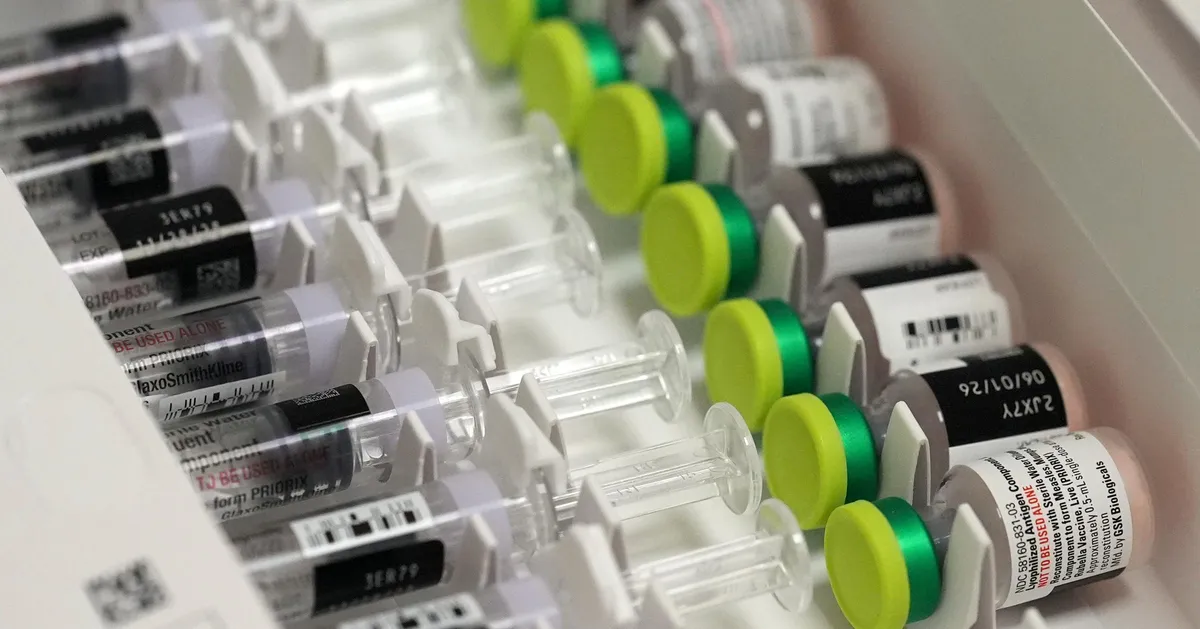
Thirteen measles cases have been reported in Minnesota over the past week, highlighting a concerning trend in the state. Among these cases, there is a significant cluster of 10 cases in Dakota County, along with three additional cases involving children who were exposed to the disease during international travel. This recent surge raises Minnesota’s measles case count to 18 for the year 2025, marking the fifth-highest total in the last 15 years, according to the Minnesota Department of Health (MDH).
None of the individuals infected in these latest outbreaks were vaccinated, underscoring the importance of vaccination in preventing the spread of this highly contagious disease. “Measles is one of the most infectious diseases on the planet. It spreads easily, and it finds those who are not vaccinated,” stated Myra Kunas, an assistant commissioner for MDH’s Health Protection Bureau.
The recent infections come amid a troubling decline in recommended vaccinations among children in Minnesota prior to their entry into kindergarten. This trend had already begun before former President Donald Trump appointed Robert F. Kennedy Jr. as the secretary of Health and Human Services. The drop in vaccination rates is alarming, as it leaves more children susceptible to infectious diseases such as measles.
Within the Dakota County family cluster, the initial transmission of measles occurred when an individual exhibiting symptoms failed to get tested. This individual subsequently spread the virus to the related children, who tested positive last week. Fortunately, no new cases have been reported since then, giving health officials hope that the outbreak in this specific group has been contained. However, epidemiologist Jayne Griffith cautioned that the three children who contracted the virus during international travel might have unknowingly spread measles to others in Minnesota.
The three newly identified cases do not appear to be linked, prompting state health investigators to explore the possibility of a common source. “They did not travel together in a group or tour or anything like that,” Griffith explained. She urged individuals to seek testing if they develop fevers or other symptoms resembling measles after potential exposure, particularly if they notice the characteristic rash associated with the disease.
For those unvaccinated individuals who have been exposed to measles, it is generally advised to remain at home from work and avoid public indoor places for up to 21 days to help prevent further transmission of the infection.
The measles virus is notorious for its high level of contagion, capable of remaining airborne and infectious for up to two hours after an infected person has left the area. A two-dose vaccine is known to be 97% effective at preventing measles, yet the disease is experiencing a resurgence in the United States as more parents decline to vaccinate their children. The 1,500 reported cases this year represent the highest total since 1992.
Just a decade ago, Minnesota boasted one of the best measles vaccination rates in the nation, with 94% of children receiving their vaccinations before entering kindergarten. However, this rate has declined dramatically, with only 87% of children vaccinated at the start of the 2022-23 school year, which placed Minnesota among the states with the sixth-lowest vaccination rates.
The simultaneous reporting of 13 cases alongside unrelated clusters is unusual, yet it serves as a warning signal. Health officials view this situation as a “harbinger” of the challenges posed by an increasingly unvaccinated and vulnerable population in Minnesota.